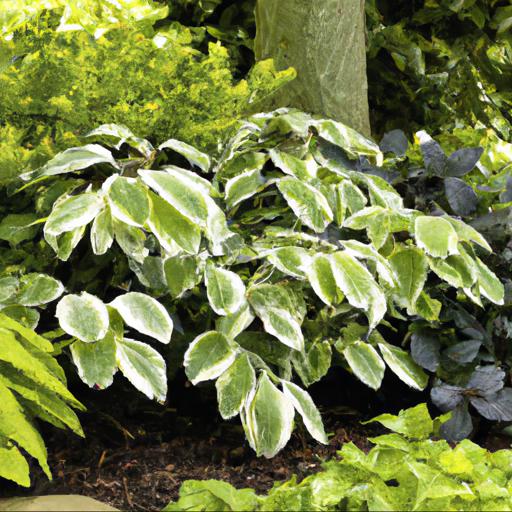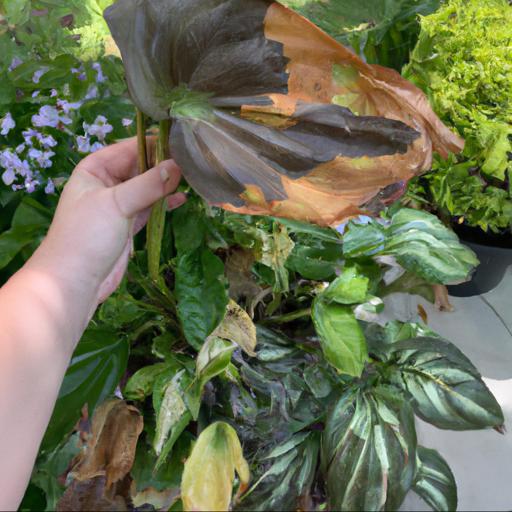Are you looking for the perfect plants to add to your garden in partial shade? Look no further! Here are 12 plants that thrive in partial shade, from evergreen shrubs to colorful perennials.
With a bit of care and attention, you can create a beautiful and vibrant garden that will last for years. From Japanese maples to hydrangeas, these plants are perfect for any garden, no matter the size or style.
Get ready to add some color and texture to your outdoor space with these 12 plants for partial shade!
12 best plants for partial shade

Partial shade areas have their own unique set of conditions that can make it challenging to choose the right plants to go there. Not all plants thrive in partial shade, so it can be necessary to select plants that are specifically designed for these kinds of environments. Here are 12 of the best plants for partial shade, so you can show off your garden with ease.
When you need to make a statement in partial shade, then the evergreen fern is the perfect choice. This garden stalwart is especially suited to these kind of conditions and works great either in pots or as a groundcover.
The fern is an especially great choice because it is elegant and stately, adding an extra touch of class to the garden. For a more dramatic look and some color in the partial shade, consider the Coleus. This beautiful and elegant plant offers a mix of variegated pink and green leaves to light up any area.
It also works great as a filler in mixed containers and can easily be divided at the end of the season. When in need of an upright pick to create focus in the partial shady area, then look no further than the lily of the valley bush.
This tall, slender and iconically scented bloomer with its delicate and intricate whitish-green bell shaped blooms is the perfect choice for a special garden. The lily of the valley bush is an especially great choice for a romantic garden, offering a truly stunning display for any garden.
When it comes to vines, the evergreen clematis is an especially great choice for partial shade. This vigorous climber is also a great choice for creating a focal point in the garden and can be trained on arbors or trellises. Plus, it blooms with beautiful white and light pink flowers in late summer and autumn, making it the perfect choice for adding a touch of color to the partial shade area.
For the container lover, consider the Calibrachoa. This wonderful and compact flower offers a striking mix of star shaped flowers in shades of red, pink, purple and yellow. Plus, the Calibrachoa is also low maintenance and works especially great when planted in hanging baskets. When selecting plants for a partial shade area, it is important to consider the different kinds of light levels. The above picks all work great in partial shade and offer a great way to show off your garden with ease.
Tips for planting and caring for partial shade plants

As a UK garden expert, I’ve got some great advice for anyone looking to add vibrant colour and life to their outdoor space with plants that thrive in partial shade. Plants in this category can be fickle and require a bit of know-how to get it right, but with a bit of guidance and preference they can thrive in areas with dappled light and varying levels of direct sunlight. Here are some key tips I would recommend to help you create a lush foliage-filled oasis in shaded areas.
Firstly, when selecting partial shade plants, it’s important to check the labels of plants, as they can sometimes mislead otherwise. Any plant that says ‘partial shade’, ‘partly shady’, or ‘dappled shade’ can thrive in the right environment and at the same time, some plants such as begonias or impatiens are labelled as ‘full sun’, ‘full shade’ or ‘partial shade’.
It is imperative to read the descriptions thoroughly before heading off to the garden centre. Once you’ve identified suitable plants for partial shade, you need to create the right soil environment.
Partial shade plants need a combination of nutrient-rich soil with plenty of organic material and acidic soil if you desire a non-native plant. The soil should be adequately hydrated, as too much water can cause root rot, whereas insufficient water can cause the plants to struggle. In addition, an organic mulch layer in and around the plants will help both with water retention and keep weeds at bay.
Finally, some good rules of thumb to follow when caring for and maintaining your partial shade plants are to fertilize in the spring and check soil moisture levels regularly. I also recommend to prune and deadhead plants to keep growth fresh and healthy. Tree and shrub branches should be pruned back to lessen the problem of too much shade.
With careful selection, some preparation and with diligent care and maintenance, you can create a stunning outdoor area and enjoy seeing your partial shade plants bring colour and life to your garden.
Common problems with partial shade plants

Partial shade provides the ideal environment for many plants to thrive, as they receive the perfect balance of sunlight and shade. While they may not be able to survive in the most intense direct light, many species enjoy moderate light exposure.
In this blog, I am going to highlight 12 of the best plants for partial shade, and discuss the common problems associated with these plants. First, and perhaps the most important consideration when selecting a plant for partial shade is that it should be able to tolerate some amount of sunlight. Many understory plants that are classified as partial shade plants cannot handle full direct sunlight and will suffer if exposed to too much sun.
This can result in yellowing of the leaves and other wilting issues. Nonetheless, there are 12 stalwart plants that will bring beauty, color and life to your partial-shade space, provided they are taken care of properly. These 12 plants are begonias, caladiums, coleus, Japanese painted ferns, lamb’s ears, hellebores, hydrangeas, impatiens, hostas, liriope, coral bells, and creeping phlox.
All of these thrive in conditions of partial shade and will give you long-lasting and vibrant flowers, foliage or ground cover depending on the variety. However, any of them can experience problems if the soil pH or moisture is not properly managed.
It is important to check the pH of the soil before planting, as well as to ensure the soil does not become too wet or dry. Most importantly, the soil should be enriched with organic matter or fertilizer to provide essential nutrients for the growth and health of your plants. In conclusion, partial shade planting can be a wonderful and rewarding gardening experience, with a wide variety of plants that bring color, texture and an overall beauty to your outdoor space.
With a bit of gardening knowledge, you can make sure that the 12 plants discussed in this blog, thrive in your garden, with lush foliage and vibrant flowers. With proper soil management and maintenance, these plants will grow with stunning color and vigor, brightening your partial-shade garden and giving you joy for years to come.
Our video recommendation
Conclusion
This article provides an overview of 12 plants that can thrive in partial shade. These plants include Hosta, Ferns, Astilbe, Bleeding Heart, Solomon’s Seal, Heuchera, Lamium, Brunnera, Primrose, Tiarella, Torenia, and Lobelia. Each of these plants has its own unique characteristics and features, making them ideal for shady areas in your garden.
With the right care and maintenance, these plants can add beauty and color to your garden.
FAQ
What are the best plants for partial shade?
Some of the best plants for partial shade include Hostas, Astilbes, Bleeding Hearts, Ferns, Heucheras, and Impatiens.
What are the benefits of planting in partial shade?
The benefits of planting in partial shade include reduced water requirements, protection from extreme temperatures, and reduced exposure to pests and diseases. Additionally, plants in partial shade often have more vibrant colors and longer blooming periods.
What types of plants thrive in partial shade?
Types of plants that thrive in partial shade include ferns, hostas, impatiens, begonias, and English ivy.
How much sunlight does a partial shade area receive?
A partial shade area typically receives 2 to 4 hours of direct sunlight per day.
What are the best soil conditions for partial shade plants?
The best soil conditions for partial shade plants are moist, well-drained soil with a pH between 6.0 and 7.0.
What are some common problems associated with partial shade plants?
Common problems associated with partial shade plants include wilting, yellowing leaves, stunted growth, and susceptibility to pests and diseases.

